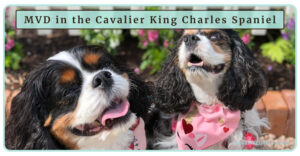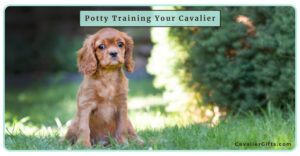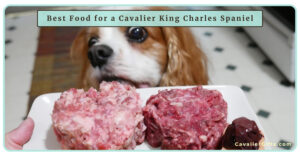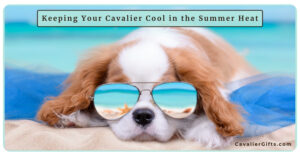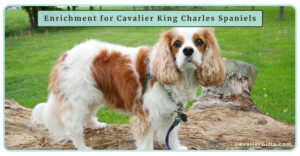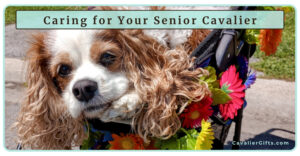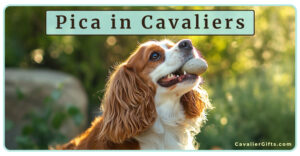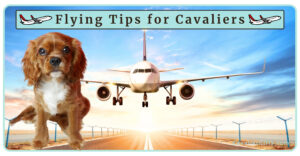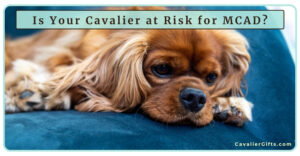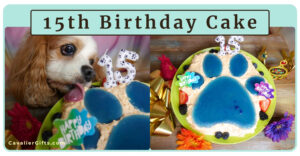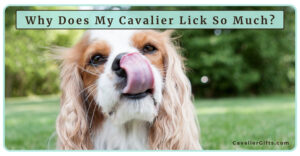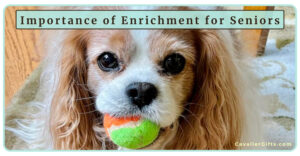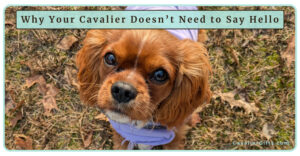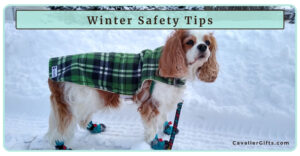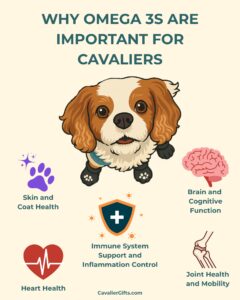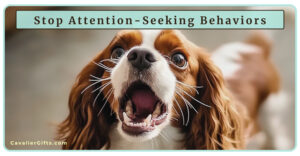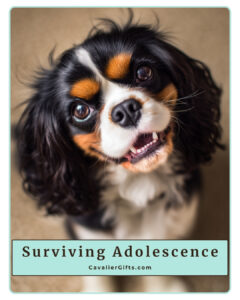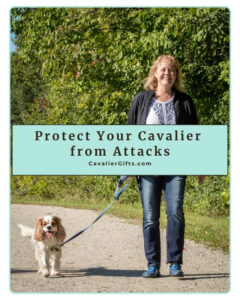What to Do When an Off Leash Dog Approaches or Attacks Your Cavalier
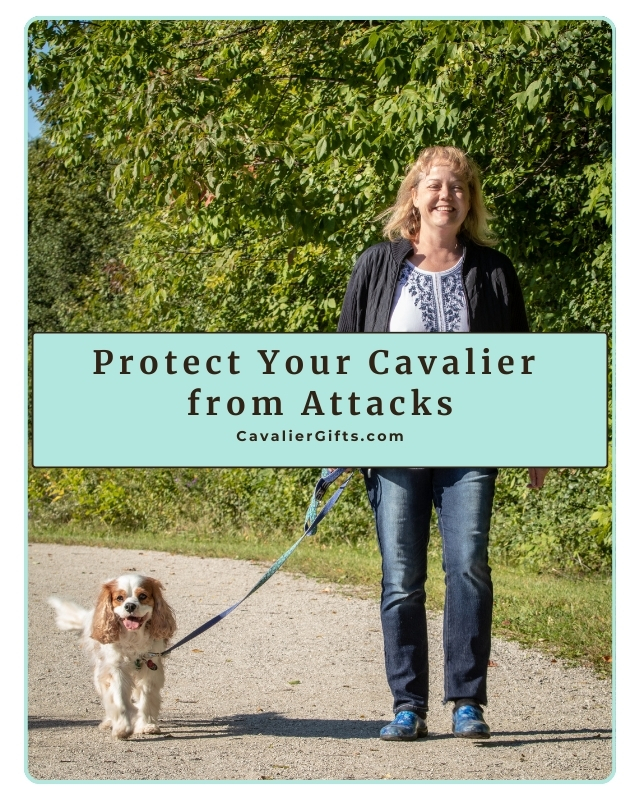

Running into an off leash dog in a public area where leash laws are in place is one of those moments that gets my blood boiling. I’ve heard from too many Cavalier families who have gone through this, and sadly, I know several Cavaliers who were seriously injured. Even a couple that didn’t survive. It’s heartbreaking, it’s preventable, and we need to talk about it.
This post is for those of us doing our best to protect our dogs, especially small, gentle breeds like Cavalier King Charles Spaniels, when others decide the leash rules don’t apply to them. Whether you’re out walking your Cavalier, training, or just enjoying your day, here are real life ways to keep your dog safe and what to do if the worst happens.
Why Letting Your Dog Off Leash Puts Others at Risk
Just because your dog is friendly does not mean they should be off leash in public areas. You never know what someone else’s dog is going through. Some dogs are recovering from surgery or illness and need space. Others are working through fear or reactivity and are not ready for sudden greetings. Some are service dogs who may not be wearing a vest but are doing their job. And many dogs, Cavaliers included, simply do not want strange dogs running up to them.
This is why leash laws exist. They are there to protect everyone. Just because your dog wants to say hi doesn’t mean they should get to.
What to Do When an Off Leash Dog Approaches
There is no perfect solution that works in every situation, especially when an off leash dog charges unexpectedly. But being prepared both mentally and physically can make a real difference. These are practical ideas I have taught, used myself, and seen work in real life. While nothing is guaranteed, having a plan in place can help you stay calm, act quickly, and protect your Cavalier as best you can.
Watch the video demonstrations and don’t forget to subscribe to @RaisingYourPetsNaturally for more tips.
Teach a Sit Stay Behind You
One of the most helpful cues I teach is a sit stay with my dog positioned behind me. I start by practicing in low distraction settings and slowly build it up over time. If a dog approaches, I cue my Cavalier to sit and stay behind me, and I step forward to handle the situation. This helps my dog feel protected and keeps them from reacting or escalating the situation.
Throw Treats at the Approaching Dog
Yes, throw treats right at the dog’s face. It may sound odd, but it works. The goal is to startle the dog and interrupt their focus. Then toss more treats behind them, toward the direction they came from. This often gives you a few seconds to calmly retreat with your Cavalier. I always carry tasty treats for this reason.
Use a Traffic Cop Stance
Turn to face the dog, extend your arm out like a stop sign, and say firmly, “Stop. Go home.” Keep your Cavalier behind you and slowly back away. Some dogs will pause or hesitate if they’re unsure or not aggressive. Keep repeating the phrase and keep your hand out, as you and your Cavalier walk backwards away.

Carry an Air Horn
If your dog is comfortable with noise, an air horn can be a great deterrent. I always condition my dog to hear it at home first and pair it with treats. When needed, a quick blast can interrupt the loose dog’s approach and give you time to move away. It’s one of my go to tools, but only if your dog can handle the sound.
Use an Umbrella as a Visual Block
I train my dogs to be comfortable with umbrellas opening indoors, so they are not startled if I ever need to use one during a walk. If a dog is charging at you, pop open the umbrella toward them. The sudden motion and large shape often causes the dog to pause or back off. If necessary, you can shake it or move it toward the dog as you use a firm, go home, verbal cue.
Carry a Personal Safety Tool
Tools like pepper gel, citronella spray, taser, or even a She’s Birdie alarm can help in urgent moments. Pepper gel has more control than spray, and the alarm can attract attention or startle the other dog. Always practice with these tools and make sure your dog is not afraid of them.
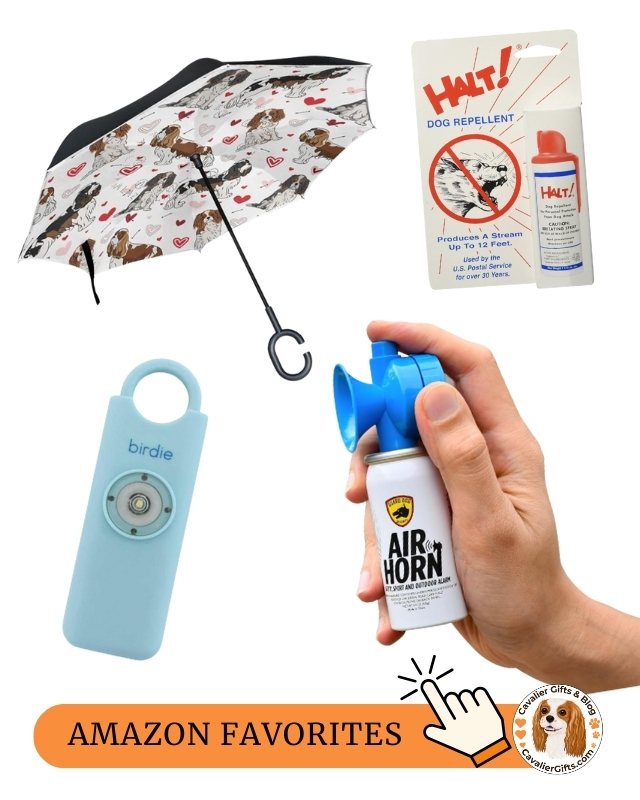
Be Cautious About Picking Up Your Cavalier
It is tempting to scoop up your Cavalier, especially since they are small. But doing so can sometimes make things worse. The approaching dog may jump at you or become more aroused. Only pick up your Cavalier if you feel it will help and if you have a safe place to put them, like a truck bed, behind a fence, or even inside a garbage bin if it means protecting them. Use extreme caution if trying this.
If You’re Walking More Than One Cavalier
This is also one of the reasons I usually prefer walking one dog at a time. It helps me stay more aware, react quickly if something happens, and really connect with the dog I’m with. But I know that’s not always possible, so here’s how to stay prepared when walking more than one.
Walking multiple Cavaliers makes things trickier, especially when a loose dog starts heading your way. It can be harder to control space, stay calm, and manage multiple leashes at once. That’s why I recommend preparing a plan ahead of time if you regularly walk more than one Cavalier.
If possible, practice sit stays with each dog individually first, then gradually build up to group stays. Teach your Cavaliers that standing behind or beside you means safety. If you see a loose dog approaching, calmly guide all your Cavaliers behind you and keep their leashes in one hand while using your other hand to deter the loose dog, whether that’s with a verbal cue, a stop signal, or a safety tool.
This is also where tools like a treat toss or umbrella can really help, because they create distance without needing to physically wrangle multiple Cavaliers. And if things feel too tight, do not hesitate to turn and walk away together. Getting distance is often the safest move when you have more than one dog depending on you.
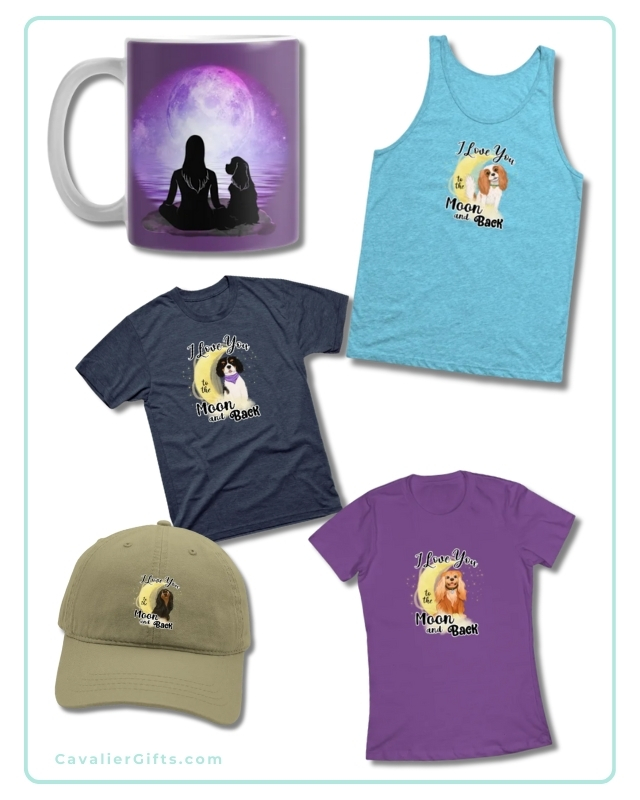
What to Do If a Dog Attacks Your Cavalier King Charles Spaniel
No one wants to think about this part, and I truly hope you never face it. But if a loose dog attacks your Cavalier, your priority becomes stopping the fight as quickly and safely as possible. This is not about hurting another dog out of anger. It is about protecting your own Cavalier King Charles Spaniel from serious harm or even death.
If you have a tool in hand, such as a stick, an umbrella, or pepper gel, use it to target the attacking dog’s face. Aim for the eyes, nose, or mouth. The goal is to interrupt the attack and create enough of a pause to safely separate the dogs. You may only have a second or two, and you need to respond fast and as hard as you can to protect your Cavalier.
If you are physically trying to break it up without a tool, one method is to grab the attacker’s back legs and swing them away from your dog. This can throw them off balance and give you a chance to create space. Do not reach for collars or faces with your hands. That is the most common way people get bitten during dog fights.
Once the dogs are separated, move your Cavalier to safety right away. If possible, secure the attacking dog so they cannot come back. Then take photos, report the incident, and document everything as soon as you can. Even if your Cavalier seems okay, a vet check is always important. Many bite wounds are deeper than they look.
Helping Your Cavalier Recover Emotionally After an Attack
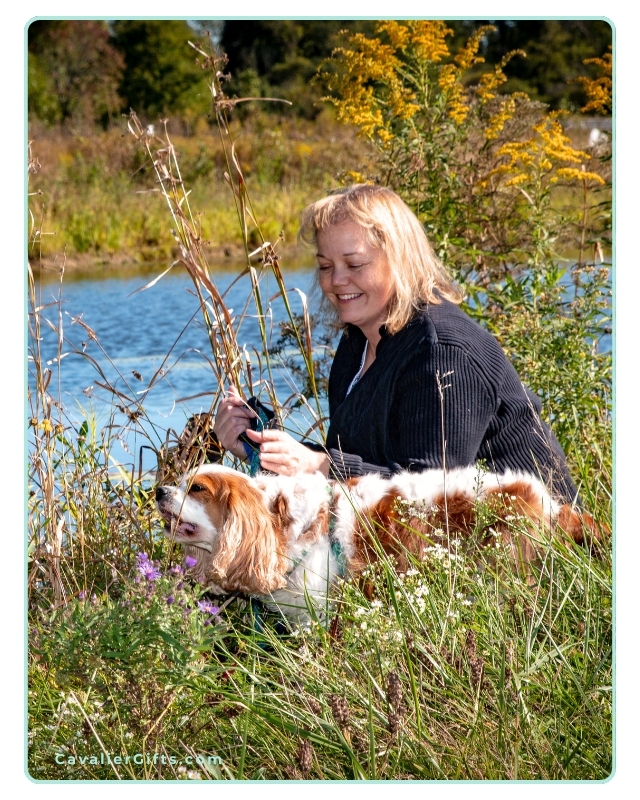
This is one of the most important parts of the process, and it is often overlooked. A Cavalier who goes through a dog attack may seem fine physically, but emotionally, they can lose trust in the world around them. I have worked with dogs who suddenly freeze on walks, avoid places they once loved, or become uneasy around other dogs even from a distance.
Start by giving your Cavalier time to decompress. Skip your regular walks for a few days and let them rest in the comfort of home. The goal is to help them feel safe again while things settle emotionally and physically. Keep their day simple and supportive.
At home, bring in confidence through simple enrichment. Food puzzles, nose games, and easy trick training can help rebuild a sense of control and engagement. These games in a familiar space can make a big difference.
When you are ready to start walking again, choose quiet places where you are unlikely to run into other dogs. Early mornings, empty parking lots, or quiet nature trails can be good options. Let your Cavalier set the pace. If they want to pause and look around or head back early, that is okay.
Pay attention to the progress. If your Cavalier walks a little farther, seems more confident, or looks at you for guidance, tell them how smart they are. Praise, treat, give a chest scratch. That is how trust returns, little step by little step.
This healing process takes time. That is exactly why I created Supporting Your Sensitive Dog: Gentle Steps Toward Confidence. If your Cavalier is showing signs of fear or hesitation, this course will guide you through gentle, trust based steps to help them feel safe again.
You’re Not Overreacting
Your Cavalier deserves to walk safely. You deserve to walk without fear. And if someone chooses to ignore leash laws, you are completely within your right to protect your Cavalier, using your voice, your body, your training, or any tool you need.
So stay prepared. Be proactive. And most of all, trust your instincts. You’ve got this.
|
|

|
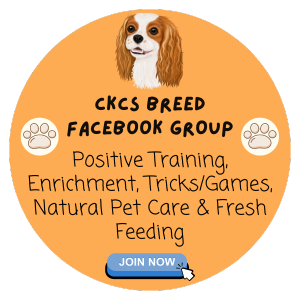
|
Google Ad Below

